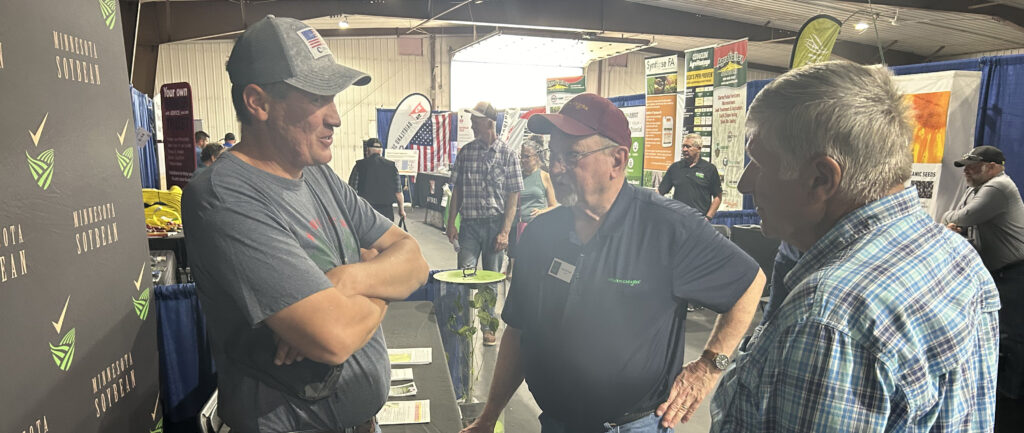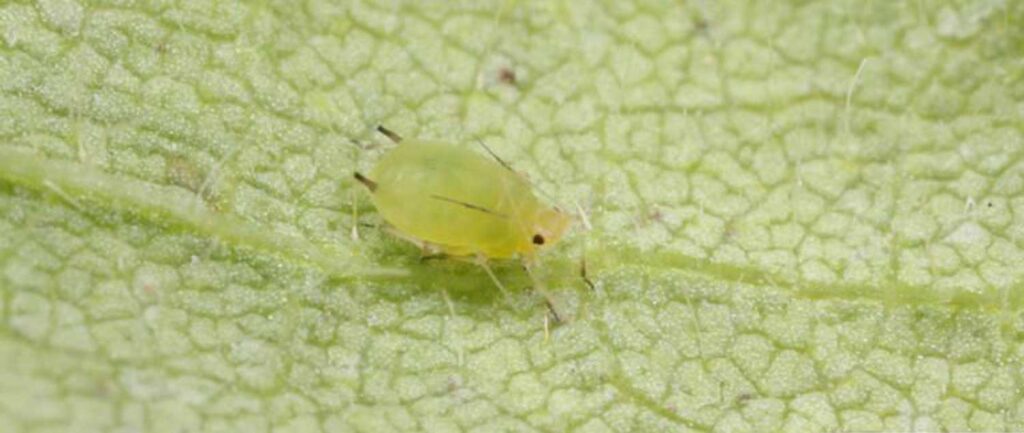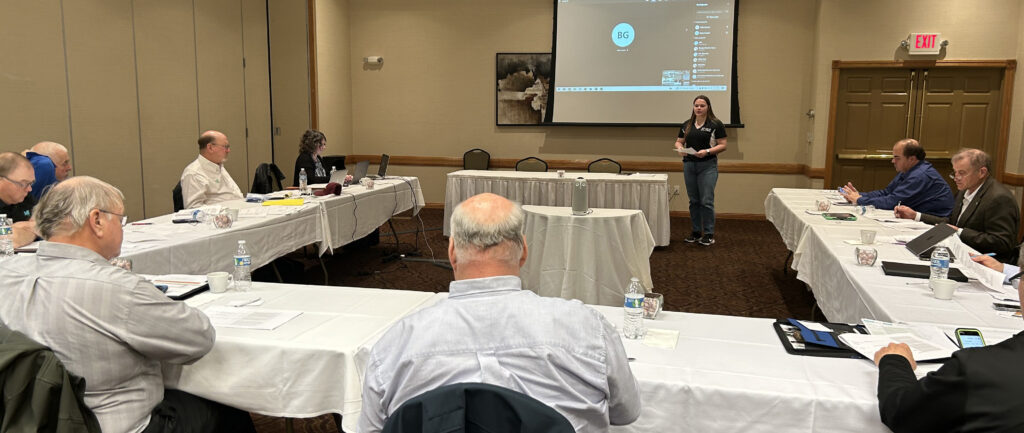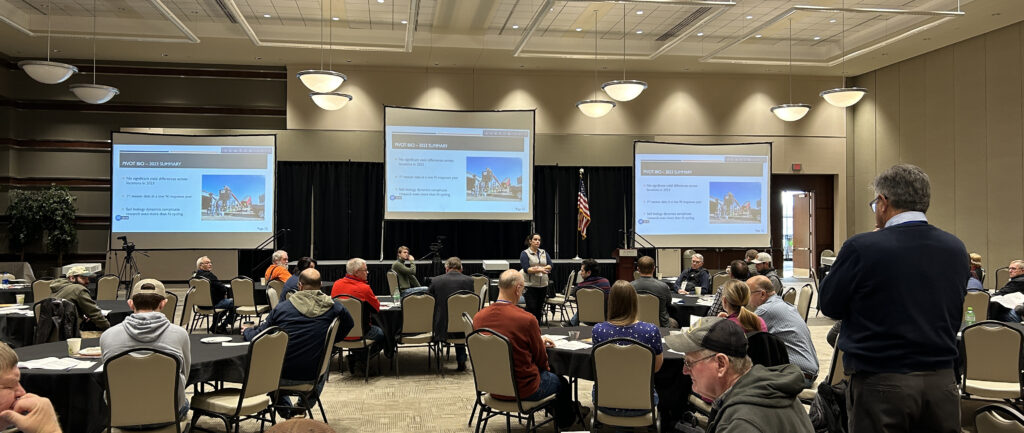Southwest Minnesota State University (SMSU) hosted its fifth annual Agronomy Field Day July 19 in Marshall. An audience of farmers, students, agronomists and locals gathered under a tent to listen to speakers, then later went on a tour of the SMSU research plots.
David Kee, director of research with the Minnesota Soybean Research & Promotion Council (MSR&PC), spoke about the importance of the Council’s investment into the program.
“MSR&PC started this partnership with SMSU in 2018,” Kee said. “We could see that, long term, these research projects would enhance the soybean profitability for growers.”
The Council’s first checkoff investment in SMSU in 2018 developed a certified crop advisor training program to train the next generation of agriculture professionals. Since then, collaboration between SMSU, MSR&PC and several other commodity programs has evolved into multiple education projects. The fields are designed to help local farmers and students calibrate their eyes to recognize certain damages when evaluating a field.

“It provides another field to look at,” SMSU Agronomy Assistant Professor Adam Alford said. “Some students have only seen what works for their parents. We try to help them identify what routes are more problematic.”
Over the summer, SMSU agronomy interns have been working on the 50-acre research plot to gain a better understanding of agriculture practices while also conducting research projects.
One of those interns was excited to have had her very first farming experience with soybeans.
Victoria Imafidor, a transfer student from Nigeria, spoke at the field day about her experience interning for the SMSU agronomy department. Imafidor, who just learned how to drive a tractor before the planting season, is grateful to be able to learn about agriculture in a more hands-on approach.
Under the guidance of Alford, Imafidor is studying planting density in soybeans and its effects on leaf growth and plant weight, a project funded by the soybean checkoff.[
“When you’re taking notes or studying in class, there are some things that we learned in theory, but it is much different when you put it into practical use.” Imafidor said. “There is nothing in this field that I won’t remember how to do, because I spent four hours under the sun learning how to do it.”







